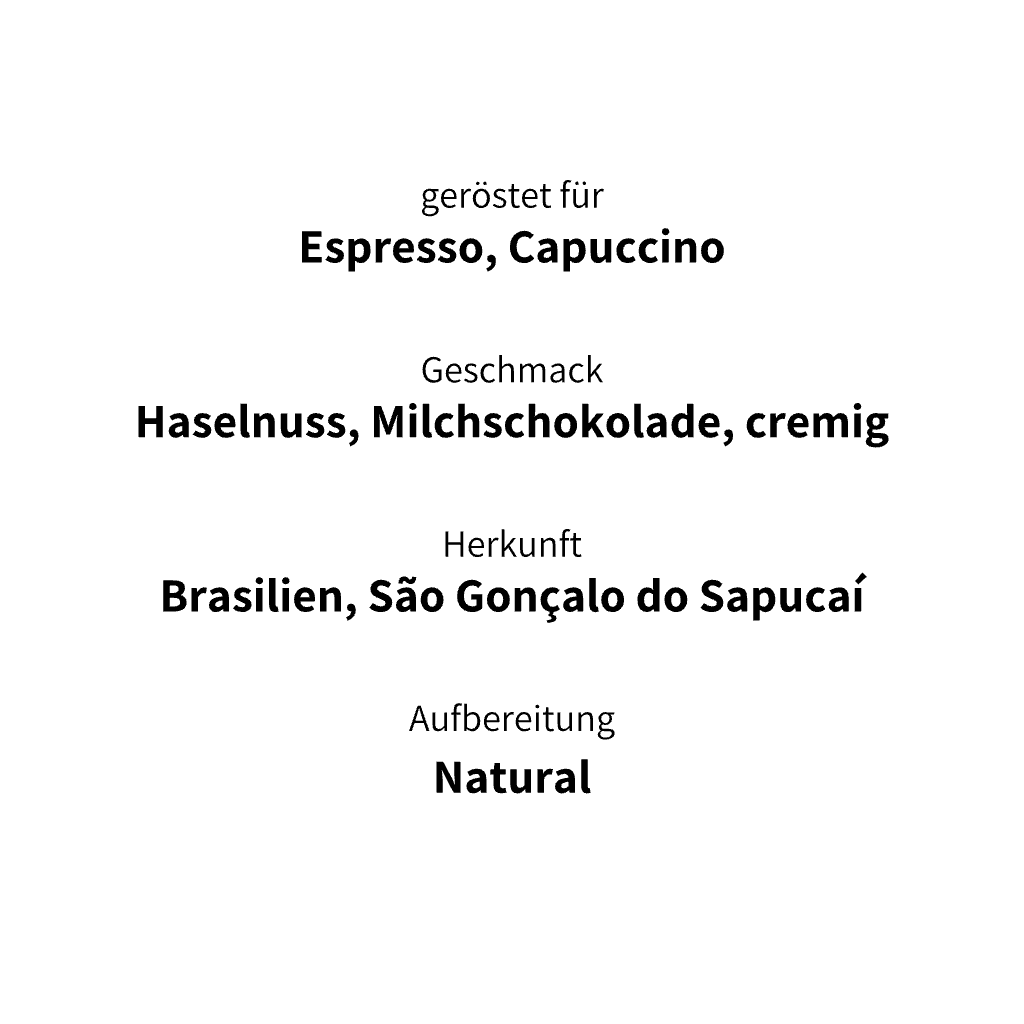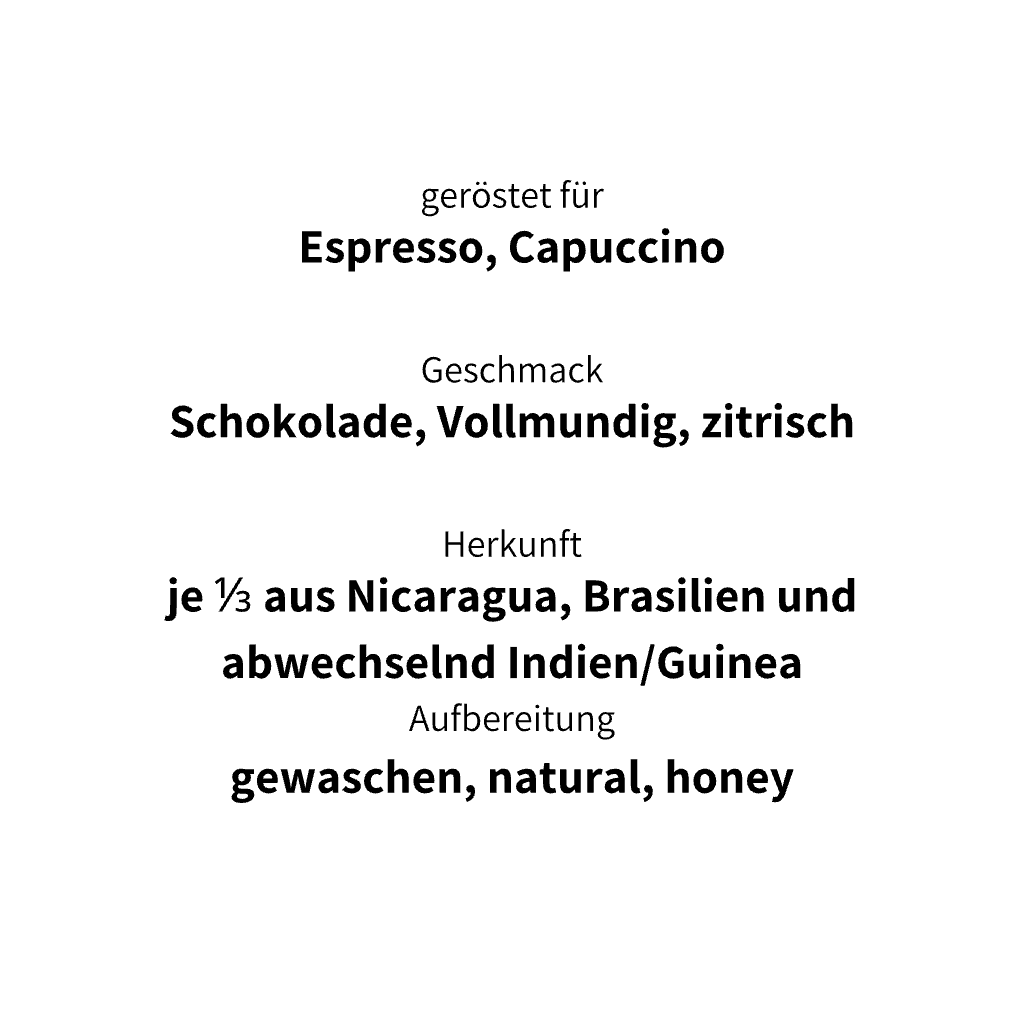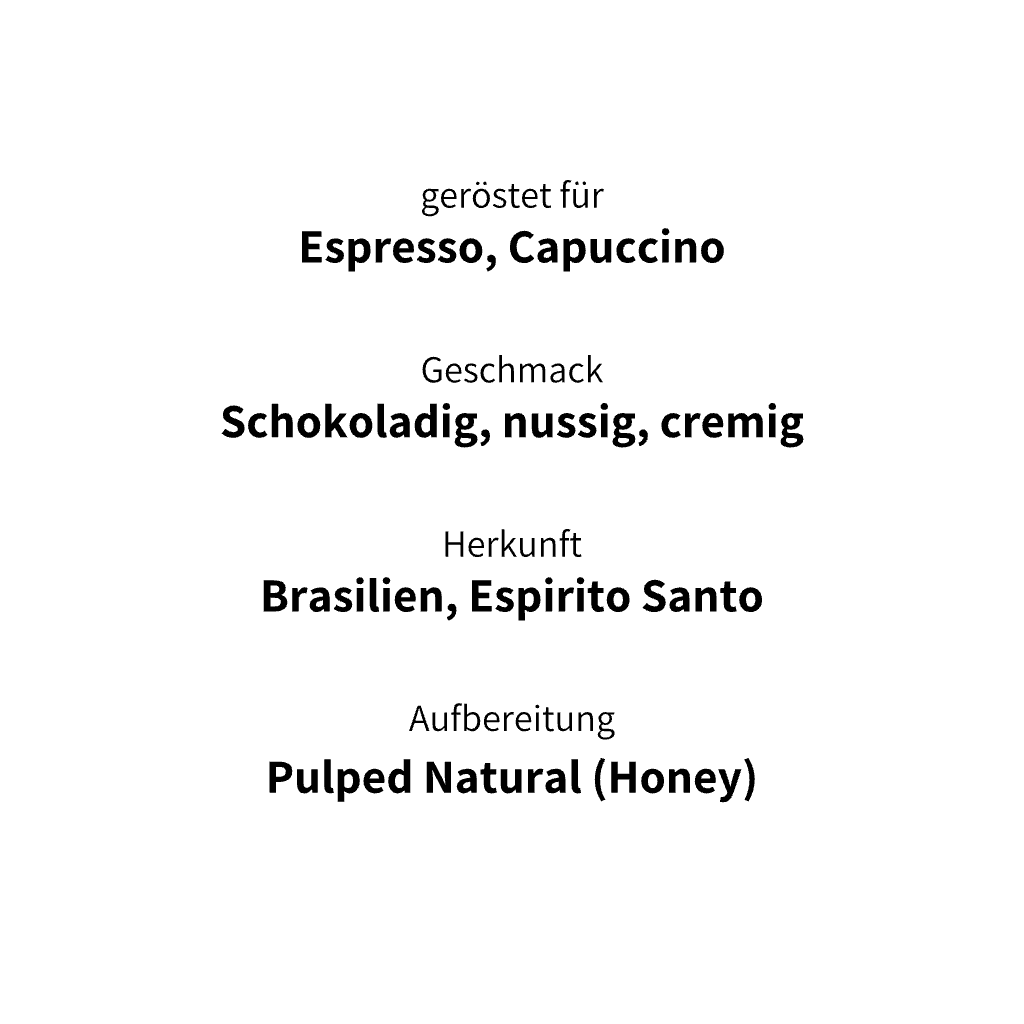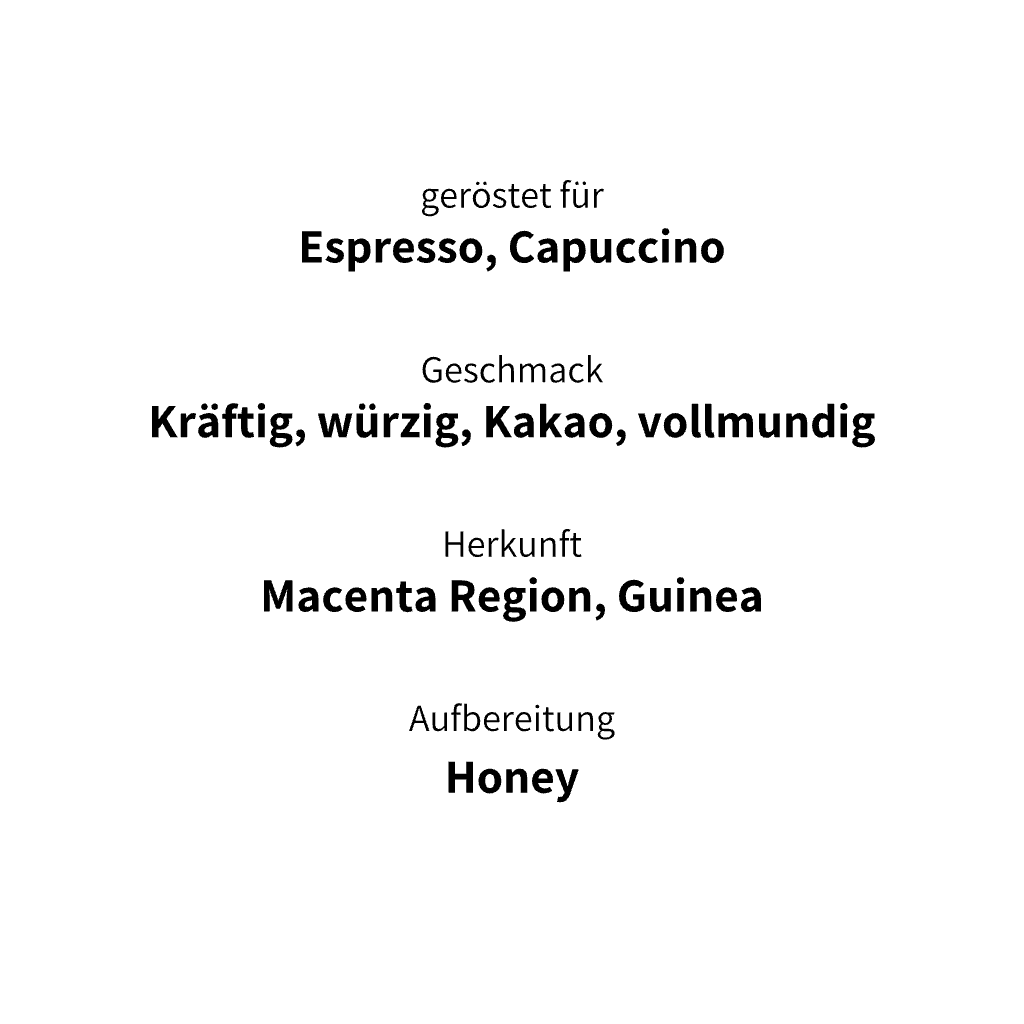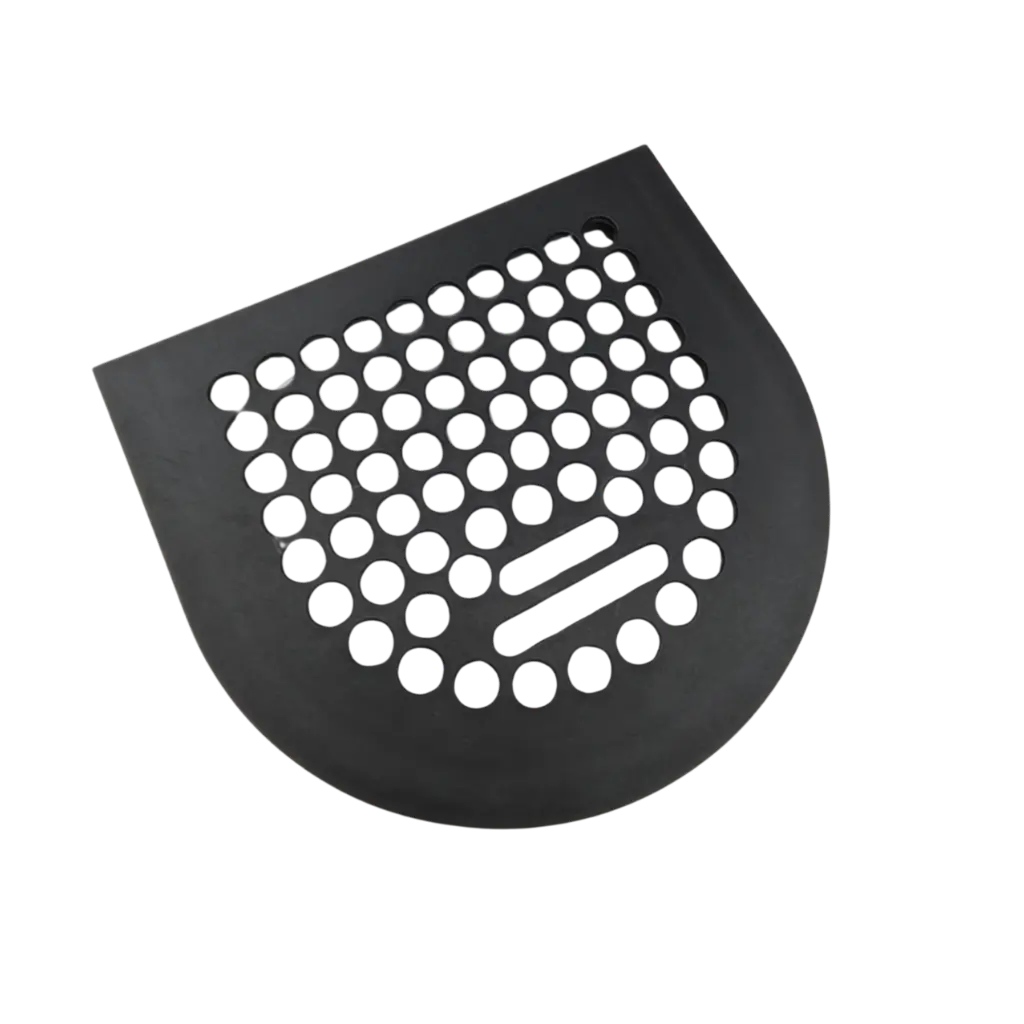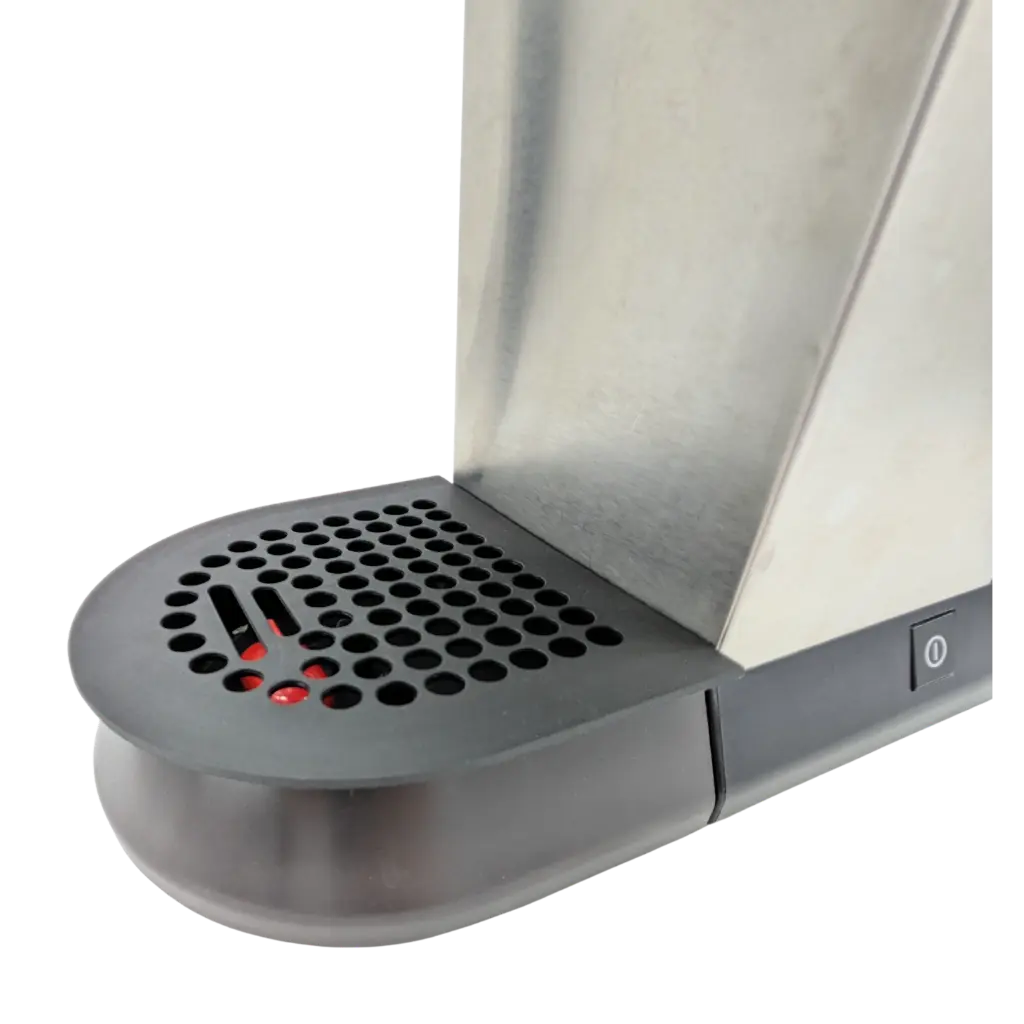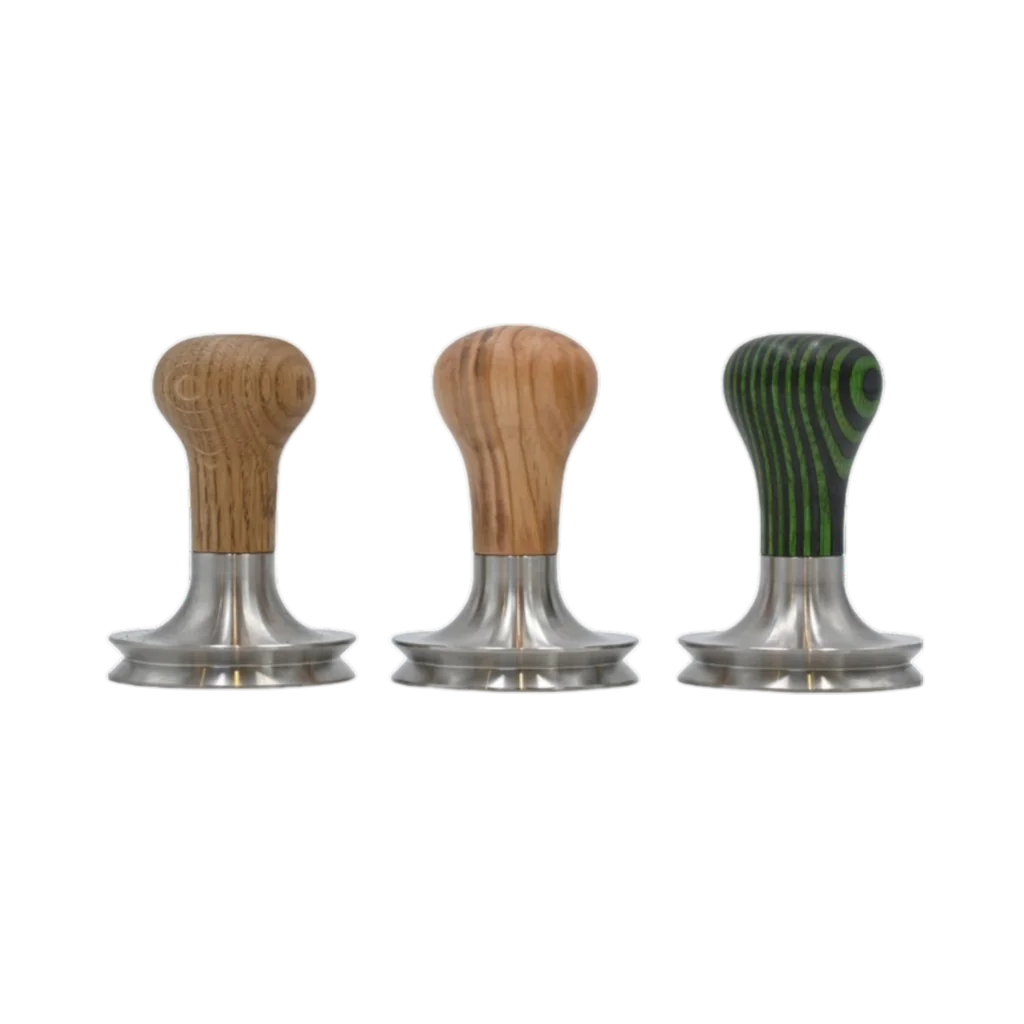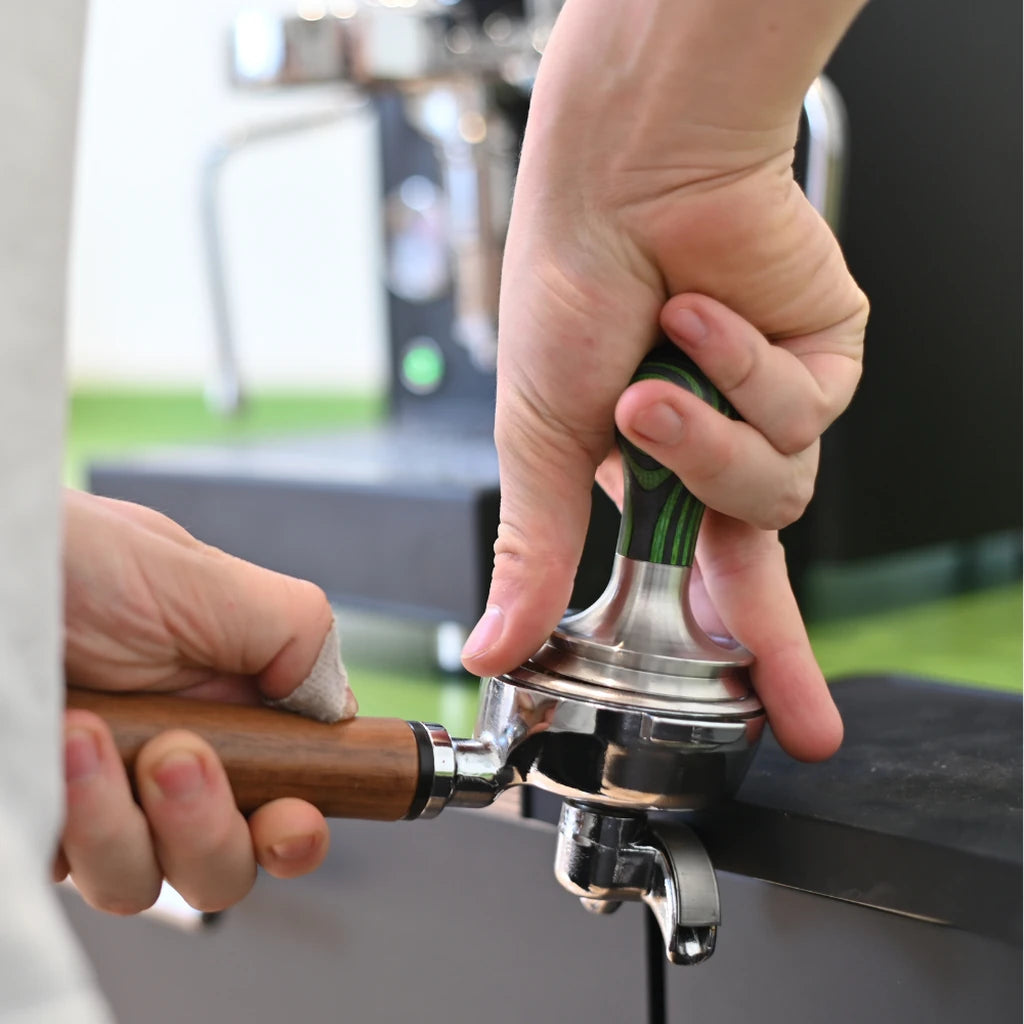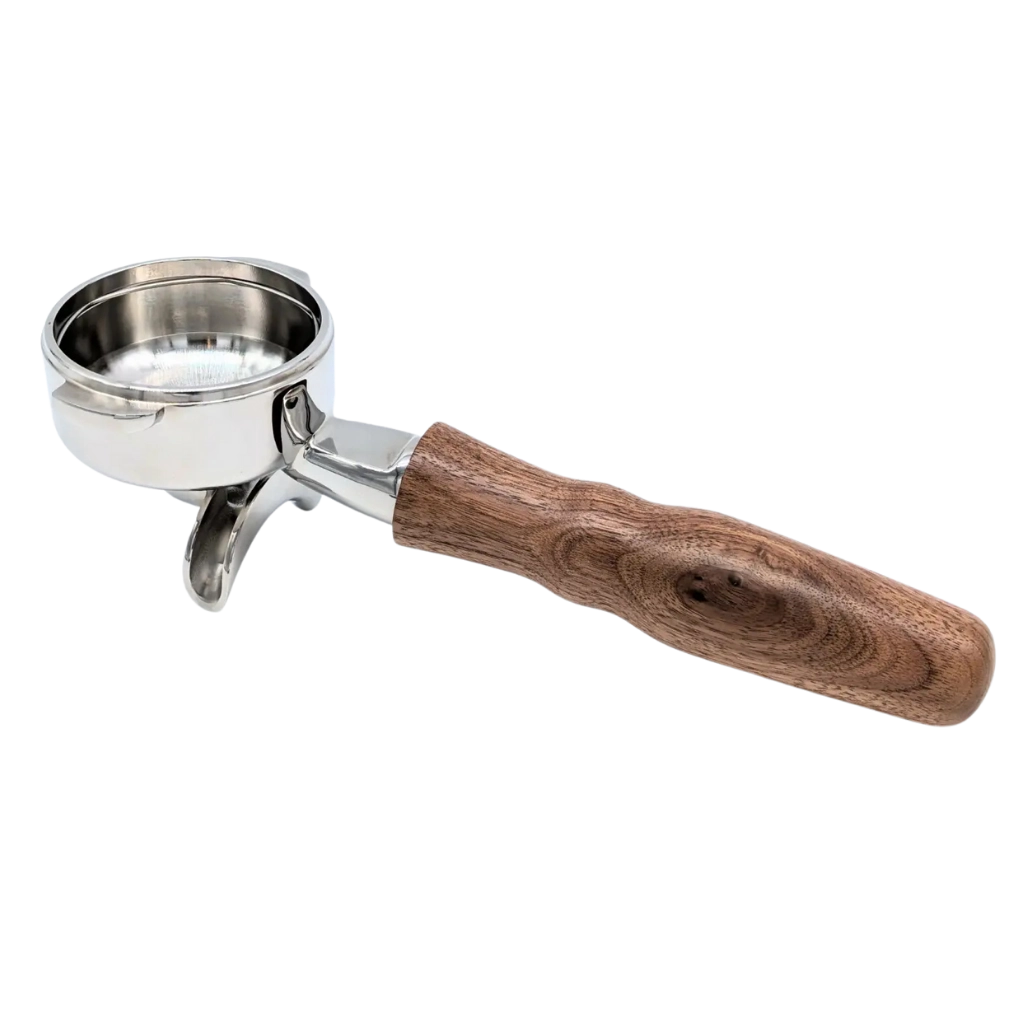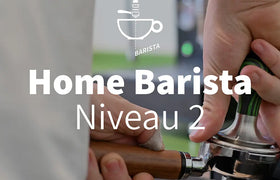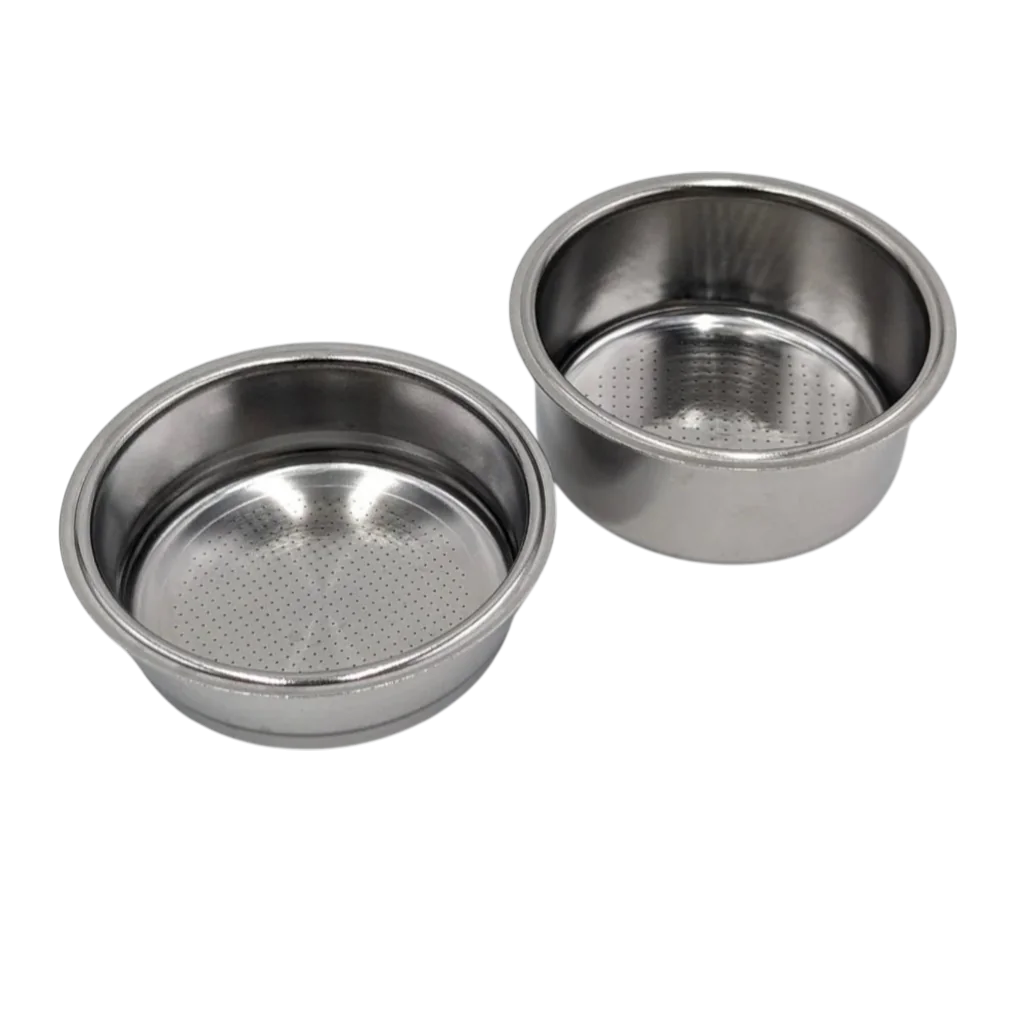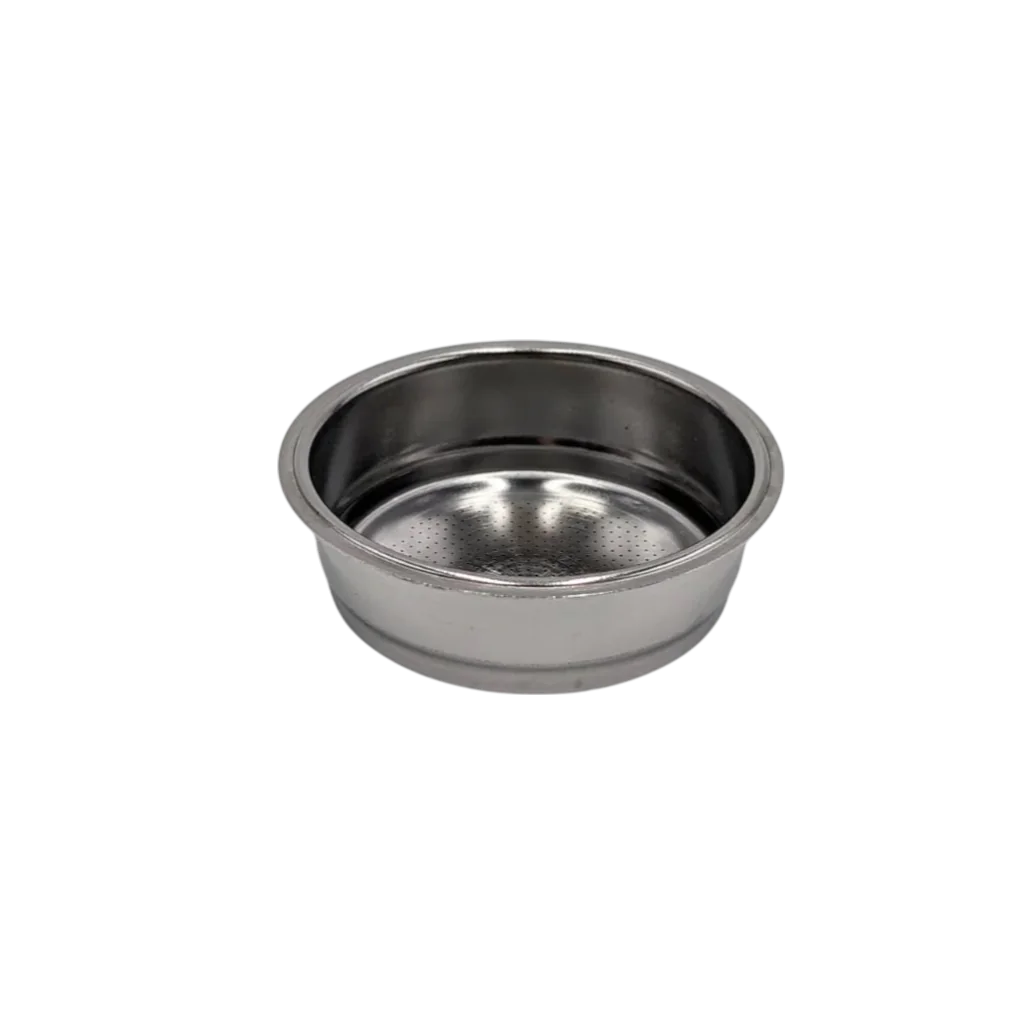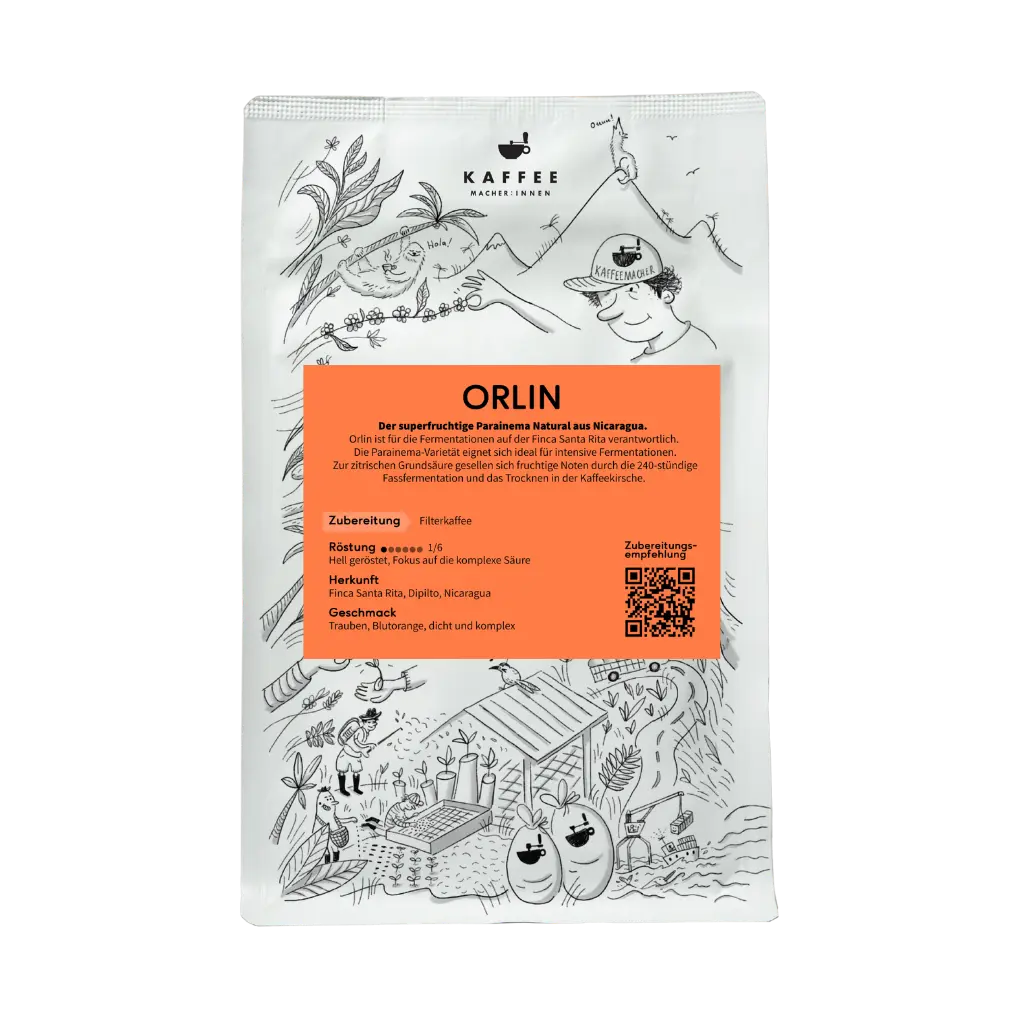
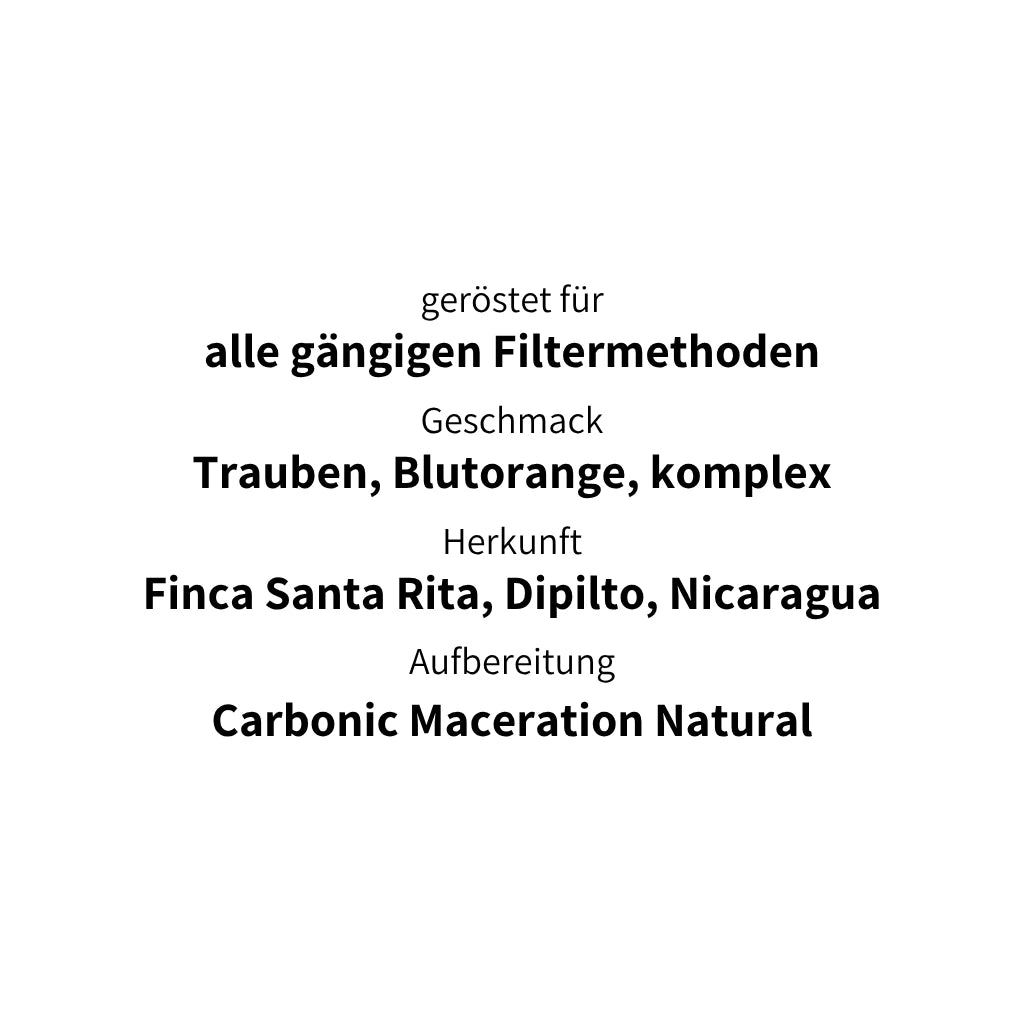
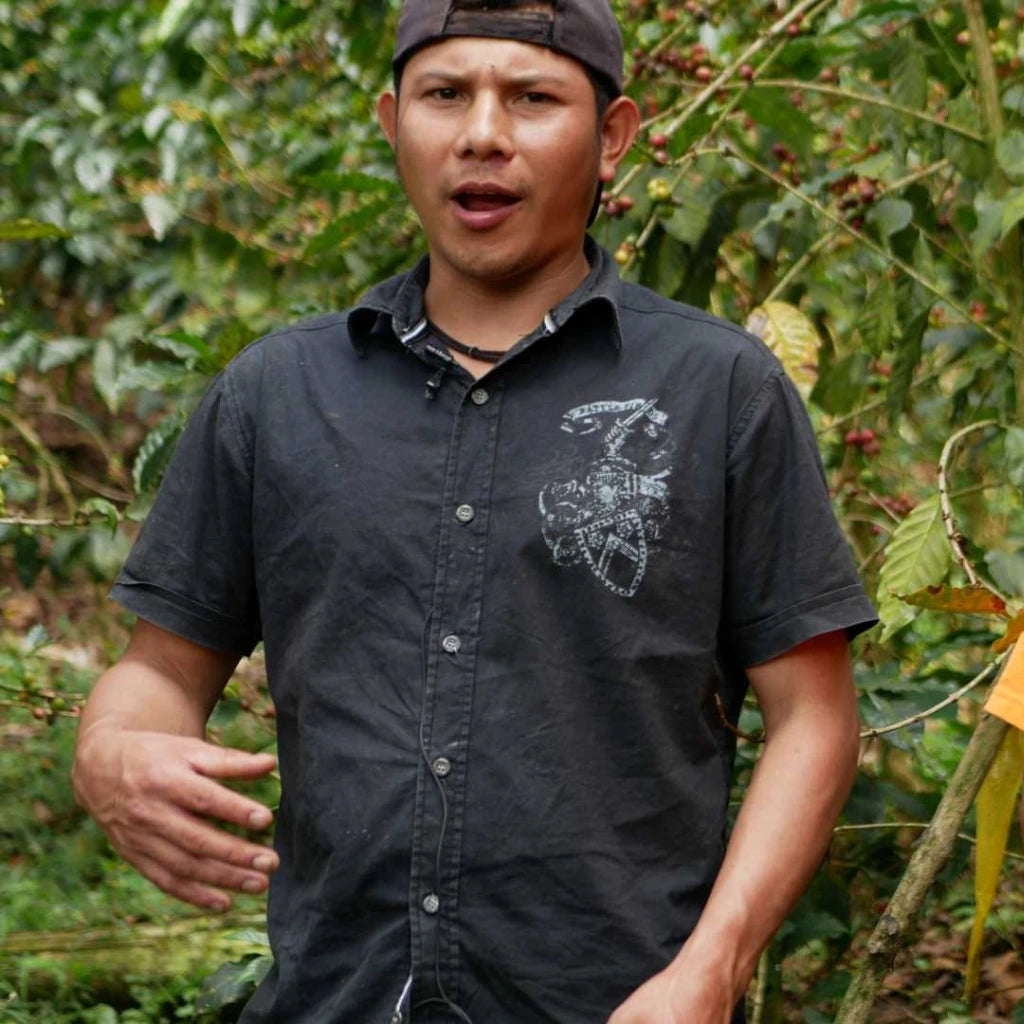
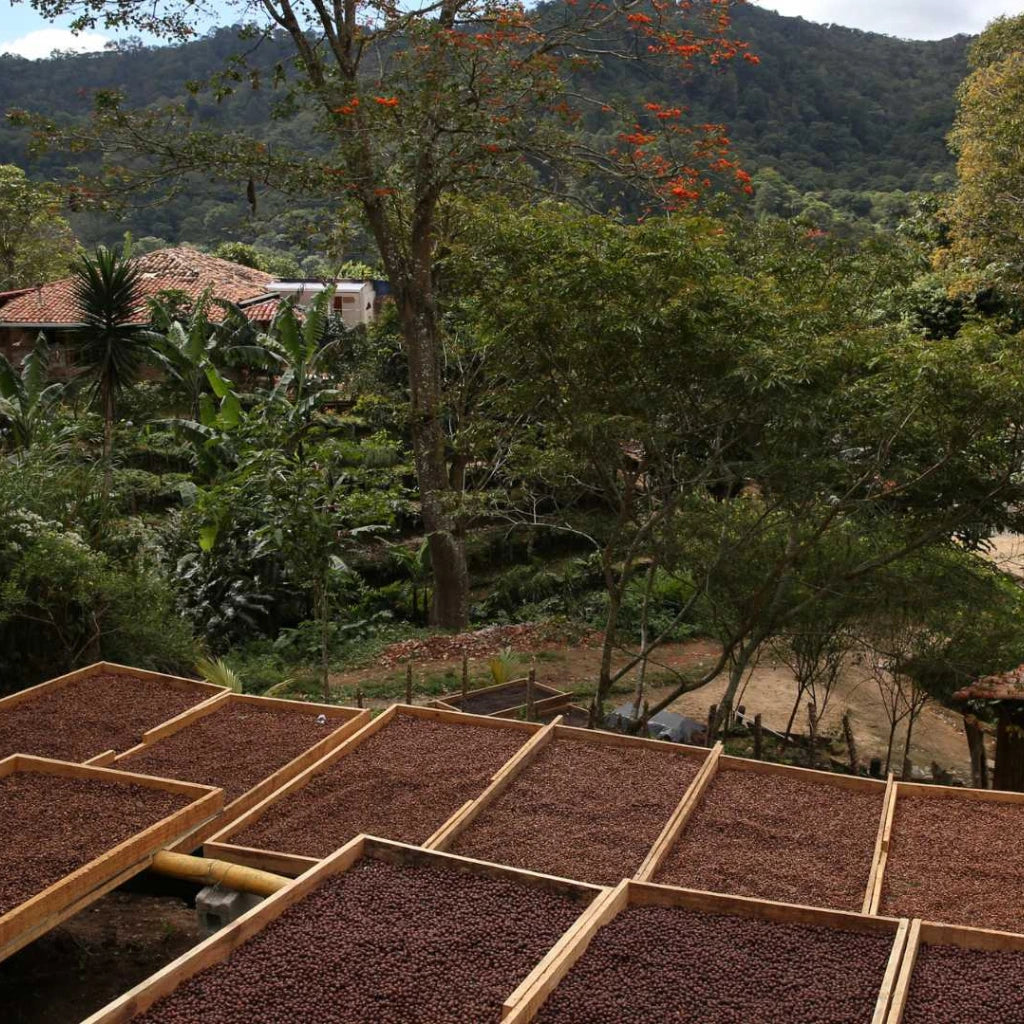
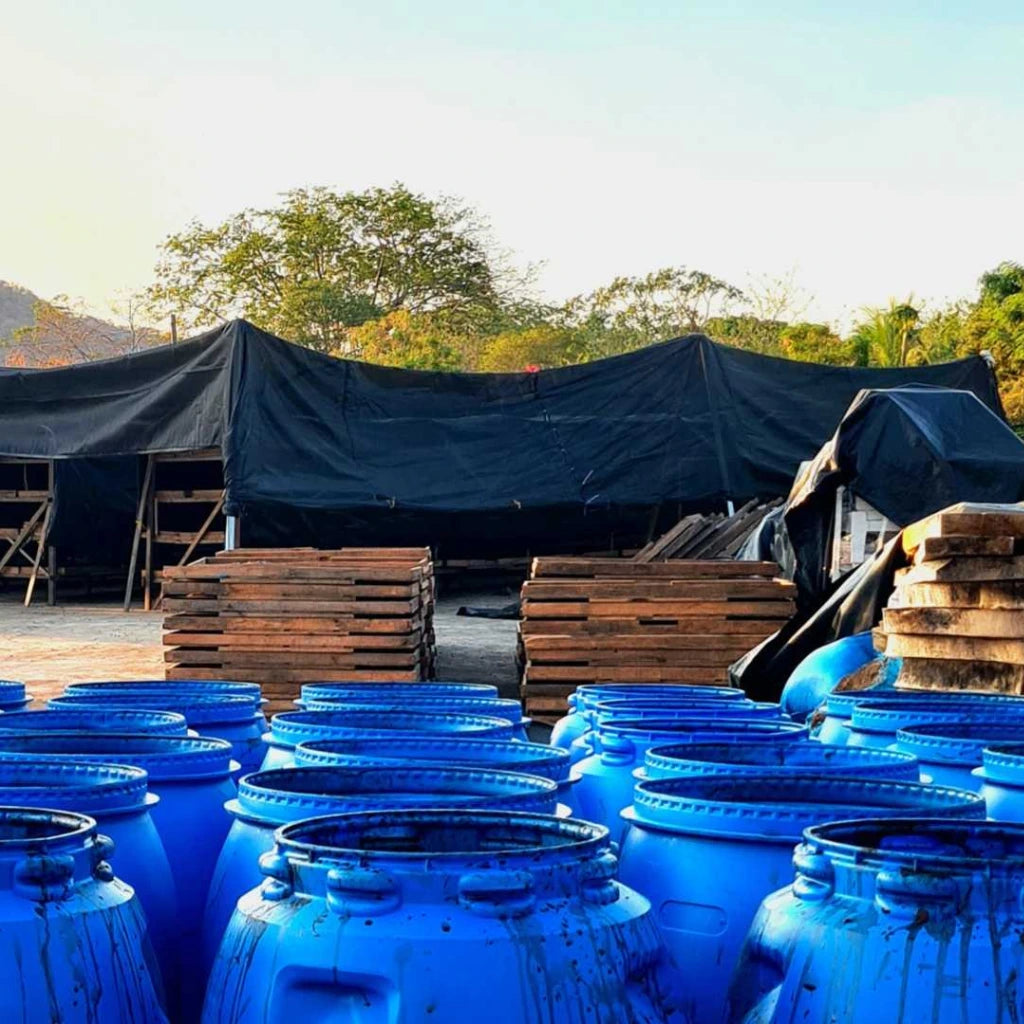
Orlin, filter coffee from Nicaragua

Orlin - filter coffee from Nicaragua
Five years ago, we decided to ferment the Parainema variety in barrels on our farm and then dry it in the cherry barrels. This brings two worlds together: the Parainema brings a lot of its own acidity, while the barrel fermentation and natural drying process give the coffee its fruity character: we taste notes of orange, strawberry, and red apple. This year's coffee is very smooth and sweet.
Green Coffee Information Orlin
Taste, orange, red apple, complex
Roasted for: all common filter methods such as: hand filter, AeroPress, French Press and Cold Brew
Origin: Nicaragua, Dipilto
Producers: Finca Santa Rita, coffee makers
Varieties: Parainema
Post-harvest process: 240h fermentation in barrels without air, then dried as natural.
In the roastery since: October 2024
Brewing recommendation Orlin: Hario V60
David used the following equipment to develop the recipe:
Water: Total hardness 3 °dH , alkalinity 1.5 °dH (more on the topic of coffee water )
Mill: Kinu M47 Classic
Dripper: Hario V60 glass filter 02
Filter paper: Hario V60 paper
Tell me more about Orlin
This special coffee comes from our small experimental field, "Mil Variedades" (One Thousand Varieties), on our Finca Santa Rita. The field is only about 100 meters higher than Santa Rita, but the climate is significantly windier and cooler. In these challenging climatic conditions, we experiment with different coffee varieties to find out which ones perform best. Parainema is one of them. The name is a contraction of "Paraiso," the area in southern Honduras (= parai), and "Nematodos" (= nema), the nematodes that attack the roots of coffee plants in the region. A resistant hybrid (Parainema) was bred in Honduras for this purpose, which for years was somewhat overshadowed by the more traditional varieties. But Orlin proves that this no longer has to be the case.

Why does coffee taste the way it does?
The aroma spectrum is incredibly broad, revealing new insights into a precise post-harvest process at every temperature. Why does this come from? The cherries were picked and then sorted in the water channels. The floating cherries were filtered out. First, we fermented the cherries for ten days in an airless barrel. Then, we dried the cherries in the shade for 26 days. The long contact time between the coffee bean and the pulp gave the fermentation enough time to develop aromas that wouldn't otherwise be present.
Why did we buy this coffee?
We purchase all our coffee from our farm—including pico-lots, meaning volumes that are less than 1 kg this year. Every year, we conduct new fermentation experiments to better understand the location. The plants from Mil Variedades are also slowly yielding, so we now have very small lots. Through these experiments, we are sharpening our understanding of which variety harmonizes with which fermentation method. The parainema in this post-harvest process has been demonstrating for the past three years how we want to interpret the coffee.

How do we roast this coffee?
We roast the coffee as a 12.5kg batch in a 30kg Giesen roaster. The total roasting time is 8:50, with a development time of 45 seconds, or 8.5%. The final temperature here is 3 degrees lower than, for example, with Ichamama, because heavily processed coffees become more porous and release oils even at relatively low final temperatures, which we want to avoid.

Get coffee details at Beanconqueror

Guaranteed origin
We know exactly where our coffee comes from and when and where it was roasted.
Free shipping in Germany from 75€
Personal advice
We are here to help you with any questions or problems.
Fast shipping
Delivery from Germany or Switzerland




